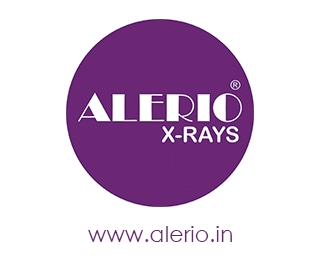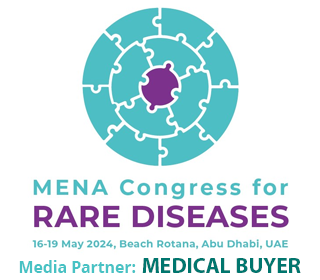Trends
Research looks at potential of pantethine against SARS-CoV-2
In a recent study posted to the Research Square* preprint server, researchers assessed the antiviral activity of pantethine against severe acute respiratory syndrome coronavirus 2 (SARS-CoV-2).
Novel SARS-CoV-2 variants have displayed characteristics distinct from the previous variants. Improved ability to evade the immune response and escape antibody neutralization are some of the aspects of the emerging SARS-CoV-2 variants. Such alterations in viral characteristics necessitate the development of new therapeutic approaches against coronavirus disease 2019 (Covid-19).
About the study
In the present study, researchers investigated the antiviral activity of a low-molecular-weight thiol called pantethine against SARS-CoV-2 infections.
The team evaluated the toxicity of pantethine to Vero E6 cells by using viability 405/452 fixable dye on Vero E6 cells that were infected and not infected with SARS-CoV-2. The VeroE6 cells were treated with varying concentrations of pantethine. The efficacy of treatment with pantethine was estimated by infecting Vero E6 cells with SARS-CoV-2 at different stages of the viral cycle using full-time, post-entry, and pre-entry treatment, including short and extended incubation periods.
The full-time treatment included the pretreatment of Vero E6 cells with varying concentrations of pantethine for an hour before virus infection. The post-entry treatment comprised the addition of SARS-CoV-2 to the cells for two hours, followed by the replacement of the viral supernatant with the pantethine-containing medium. Furthermore, the pre-entry treatment included the addition of pantethine to the cells one or 24 hours prior to viral infection with the replacement of the virus-drug mixture with a fresh medium.
The team also evaluated the variety of SARS-CoV-2 infection rates in the Vero E6 cells by determining the presence of SARS-CoV-2 spike (S) protein using flow cytometry analysis and of S and SARS-CoV-2 nucleocapsid (N) proteins by western blot analysis. The viral copy numbers were also quantified in the Vero E6 cells and the cell supernatants via real-time reverse transcription-polymerase chain reaction (rtRT-PCR) for N and nonstructural protein 6 (NSP6) genes. Furthermore, remdesivir was employed as a positive control.
The efficacy of pantethine was also estimated by infecting non-small cell lung carcinoma-3 (Calu-3) cells with SARS-CoV-2 using the full-time treatment. Furthermore, the team examined the expression of five members of the homologous to E6AP C-terminus (HECT) E3 family namely, WW domain-containing E3 ubiquitin-protein ligase 1 (WWP1), WWP2, SMAD specific E3 ubiquitin-protein ligase 1 (SMURF1), neural precursor cell-expressed developmentally downregulated gene 4 L (NEDD4L), and NEDD4.
Results
The study results showed that different concentrations of pantethine did not produce any toxicity in the Vero E6 cells. Full-time treatment showed that treatment with different concentrations of pantethine reduced the extent of SARS-CoV-2 infection in the Vero E6 cells in a dose-dependent manner. Treatment of the cells with 100µM, 250µM, 500µM, and 1000 µM of pantethine reduced the number of S protein-positive cells by 52.3%, 70.2%, 92%, and 97.1%. The team also found a significant reduction in the expression of the N proteins and the NSP6 genes in the cells and the pantethine-treated supernatant. Notably, the reduction in infection post-pantethine treatment was comparable to that after remdesivir treatment.
Post-entry treatment showed that pantethine substantially reduced the infection rate by 27% and over 97% post-treatment with 50 µM and 100 µM to 1000 µM of pantethine, respectively. The team also observed a reduction in the expression of the SARS-CoV-2 S and N proteins and the N and NSP6 genes in the pantethine-treated supernatant. These effects were also comparable to those after remdesivir treatment and indicated that the antiviral activity of pantethine was involved in the post-entry pathways of viral pathogenicity.
In pre-entry treatment, the team found no notable impact of pantethine on the infection rate when the treatment was administered an hour before viral infection. However, a significant effect on infection was observed when the duration of pretreatment was increased to 24 hours. This suggested that pantethine was also involved in viral entry pathways.
The team also observed that SARS-CoV-2 infection increased the messenger ribonucleic acid (mRNA) expression of WWP1, WWP2, SMURF1, and NEDD4 but had no impact on the mRNA expression of NEDD4-L in the Vero-E6 and Calu-3 cells. Moreover, pantethine treatment inhibited the SARS-CoV-2-induced increase in mRNA expression of the studied HECT E3 ligases. This suggested that the antiviral activity of pantethine could be increased by the reduction in the expression of E3 ligases.
Conclusion
The study findings highlighted the antiviral effects of pantethine on the rate of SARS-CoV-2 infection. Pantethine also displayed pleiotropic effects, including antioxidant, anti-inflammatory, and anticoagulant effects, which could benefit acute Covid-19 patients. The researchers believe that with the absence of any toxicity post-treatment, pantethine can serve as a potential therapeutic drug to treat SARS-CoV-2 infections. News Medical













